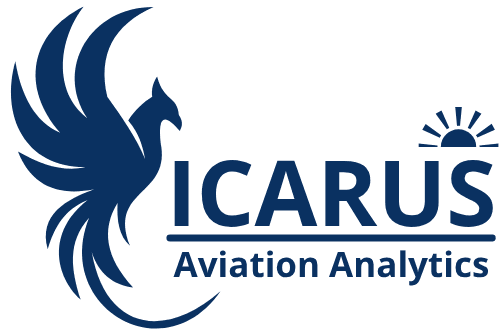The 5 Best Practices in Civil Aviation Statistical Reporting
Fi
The 5 Best Practices in Civil Aviation Statistical Reporting
Estimated reading time: 3 minutes
In civil aviation, statistical reporting is not just a regulatory obligation — it is the foundation for understanding, planning, and optimising air operations.
Yet many airlines still face delays, inconsistencies, and rework due to the lack of standardised methodologies.
At Icarus Aviation Analytics, we share five best practices that can transform statistical reporting into a truly strategic tool.
1. Clean your database before starting
Before consolidating any form, make sure your database is genuinely ready to work with.
This means removing duplicate records, excluding non-revenue flights, and ensuring every column contains complete and coherent information.
A clean database prevents cumulative errors and simplifies all subsequent calculations. This step is the cornerstone of every analytical process.

2. Maintain consistency across forms
Each form serves a distinct purpose, but all of them are interconnected.
For example:
- Passengers, freight, and mail reported in Form A must match the routes detailed in Form B.
- Departures and KPIs in Form C must align with those declared in Form A.
- Departures, hours flown, and distance covered in Form D must coincide with the same totals consolidated in Form A.
Cross-checking ensures consistency, avoids remarks from authorities, and demonstrates strong control over data traceability.
3. Document assumptions and estimates
At times, certain data must be estimated — and that is perfectly acceptable. The key is transparency.
Record the methods used, such as the average passenger weight recommended by the international authority, the estimated payload, or the assumed average speed.
Documenting these parameters allows reproducibility and facilitates technical review.
Traceability is a sign of statistical maturity.
4. Respect the official reporting format
It is essential to comply with the structure required by local or international authorities, as many data systems are built upon it.
This facilitates automatic processing and validation of the information reported.
It is not an administrative whim — it is a practical framework that enables authorities to analyse large datasets efficiently.
With Icarus Aviation Analytics’ ATRs Generator, this requirement is fully ensured and simplified.

5. Implement automated quality controls
Periodic reviews help detect anomalies such as load factors above 100%, atypical distances, or inconsistencies among ASK, RPK, and ATK.
The ATRs Generator also performs automatic verification of key indicators, reducing human error and strengthening your airline’s credibility with authorities.

Bonus: Mistakes happen — and that’s okay
If you submitted a form with incorrect information — whether you noticed it yourself or were notified by the authority — don’t worry.
No one dies, and it’s not the end of the world.
Simply correct the file, resubmit it, and document the change.
What matters most is transparency and a mindset of continuous improvement.
Conclusion
Accurate and consistent reporting is not an administrative burden — it reflects professionalism and a true commitment to efficient air transport management.
Adopting these five practices not only ensures compliance with local and international authorities but also raises the technical quality of your statistical unit and reinforces your institutional reputation.
Moreover, it is highly advisable to maintain consistency across all figures: make sure the data you report to the authorities are the same as those published on your website or annual reports.
Such consistency builds credibility and trust, both internally and externally.
➡️ Download the ICARUS Insights Series Nº 2 (PDF) + infography
➡️ Descargar ICARUS Insights Series Nº 2 (PDF) + infografia
➡️ Télécharger ICARUS Insights Série Nº 2 (PDF)+ infographie
